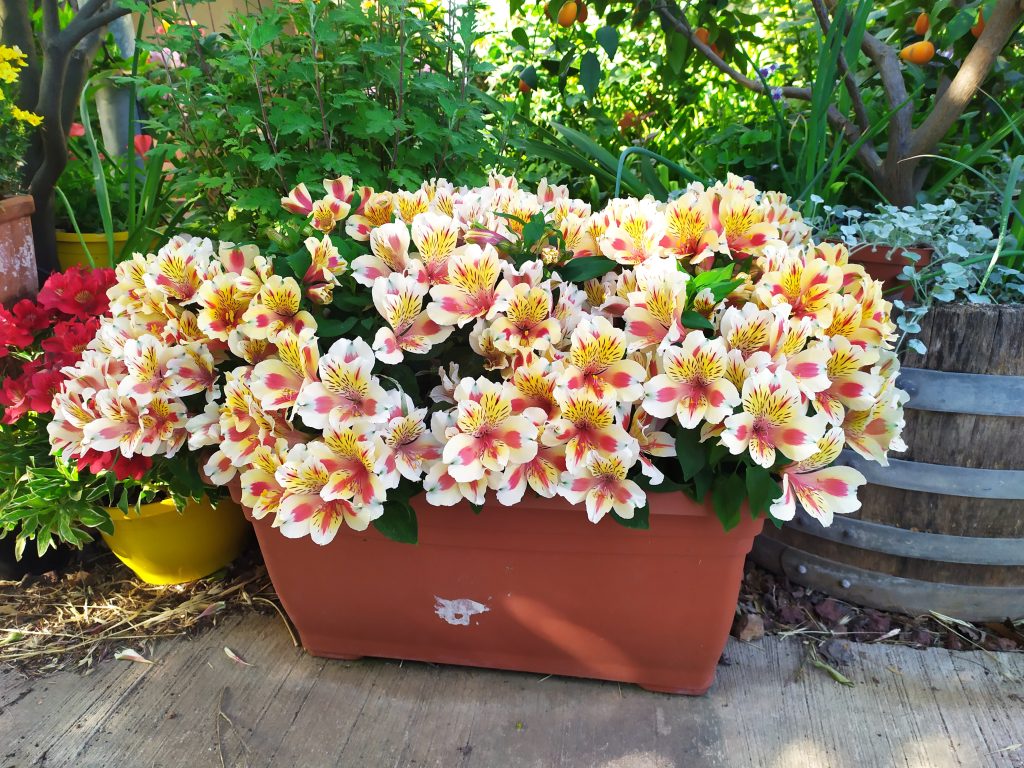
Alstroemeria compact cultivars
Family: Alstroemeriaceae | Origin: Southern America
:As a prologue, a word about cultural colonialism in plants
as in many other fields, most botanists in the 18th and 19th centuries came from Europe and discovered thousands of exotic plants in America, Africa and Asia during their travels.
Many of them named the new plants they discovered after European nobles or rich people in order to pay them respect (or for the sake of flattery and continued financing of their trips).
The same goes for the Alstroemeria: the parents of these special hybrids are part of about 60 species, most of which are from Chile and Brazil and all from South America, named after the great botanist Carl Linnaeus's good friend, a Swedish baron named Claas Alstromer, who must have been pleased with the honor.
Did we already say botanical colonialism?
In their common name 'Inca lily' there is a hint of their region of origin, and we suggest changing their name to Machu Picchuria or Cusconia, and if not that, then at least to remember the Andes and think of llamas every time we look at the beautiful flowers.
n nature there are many species of alstroemeria – small and large, tropical, alpine and desert dwelling. All but one species are perennial and grow from an underground rhizome that allows them to go dormant during cold or dry times.
The group of plants we are offering this week, compact Alstroemerias from the Princess Lily series, was created by crossing winter-flowering species from Chile with summer-flowering species from Brazil. The result – low and wide plants abundant with blooms in many colors, which in optimal conditions can bloom for most of the year.

From the rhizome rise short stems bearing light green or bluish-green leaves. Some of the stems bear only leaves and some bear at their top several huge flowers with a diameter of 7-8 cm with six petals, three of which are dotted with short longitudinal stripes.
The plant spreads a little and can reach a diameter of 60 cm and a height of 30-40 cm.
לכתבה על האלסטרומריה בעברית לחצו כאן

